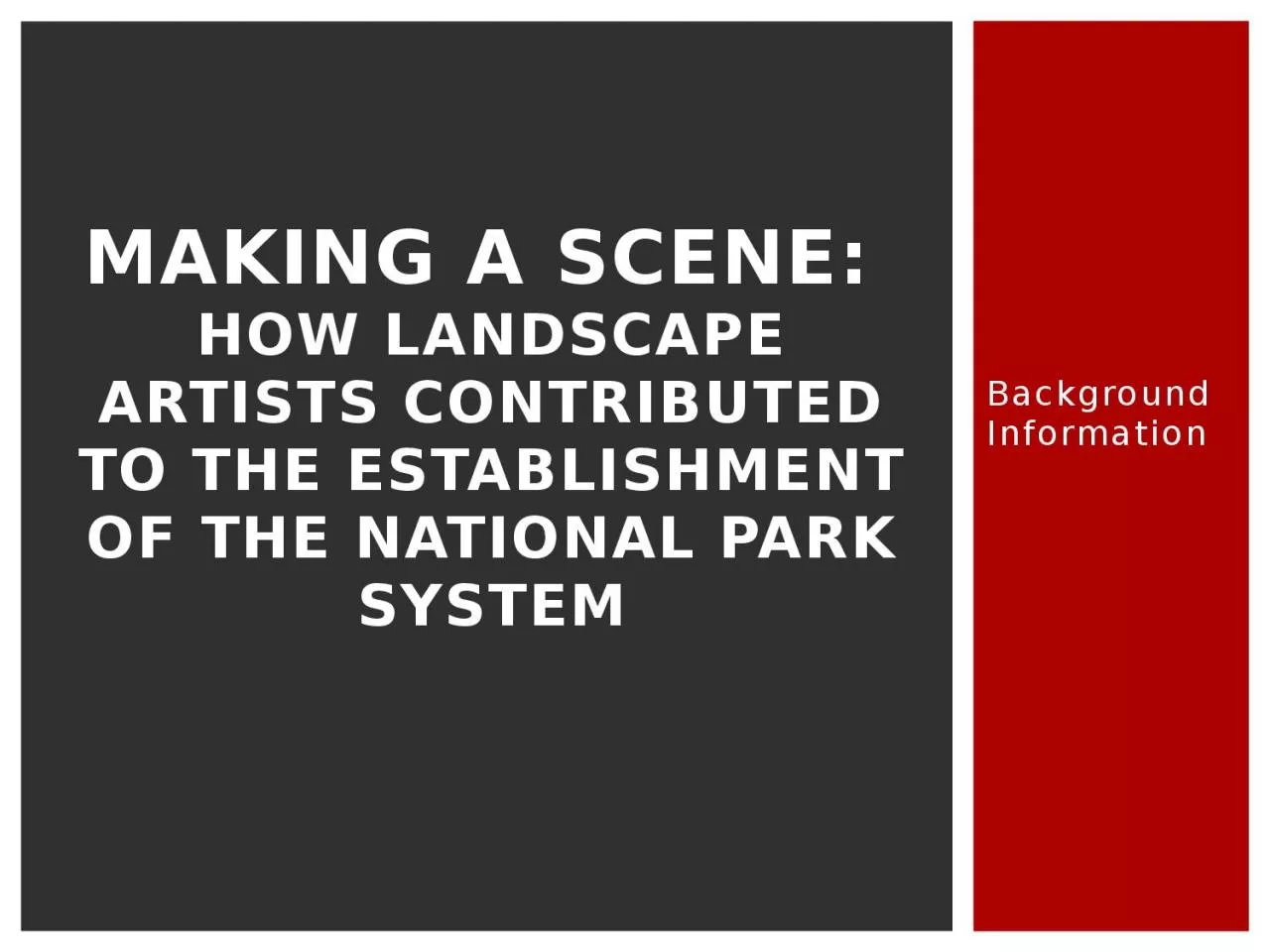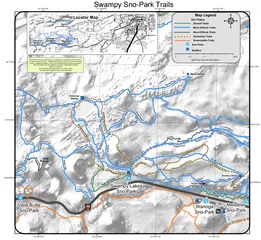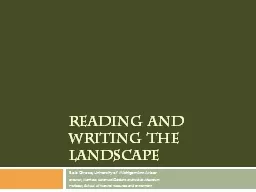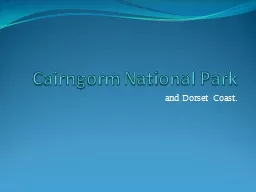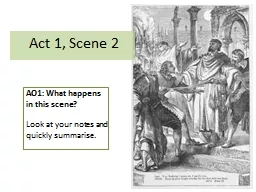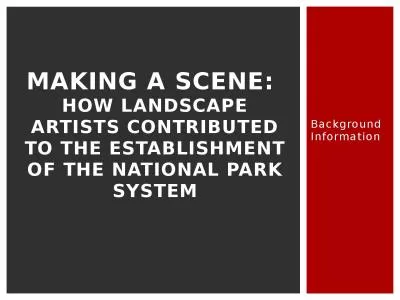PPT-Making a Scene: How Landscape Artists Contributed to the Establishment of the National
Author : dstech | Published Date : 2021-03-04
Because the wonders of the Yellowstone region had not been seen by more than a handful of people on the East Coast conveying the features of the amazing landscape
Presentation Embed Code
Download Presentation
Download Presentation The PPT/PDF document "Making a Scene: How Landscape Artists C..." is the property of its rightful owner. Permission is granted to download and print the materials on this website for personal, non-commercial use only, and to display it on your personal computer provided you do not modify the materials and that you retain all copyright notices contained in the materials. By downloading content from our website, you accept the terms of this agreement.
Making a Scene: How Landscape Artists Contributed to the Establishment of the National: Transcript
Download Rules Of Document
"Making a Scene: How Landscape Artists Contributed to the Establishment of the National"The content belongs to its owner. You may download and print it for personal use, without modification, and keep all copyright notices. By downloading, you agree to these terms.
Related Documents

